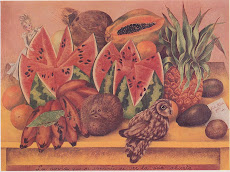Its not love that makes the world go round (was it ever ?) but food and eating. The history of evolution is that of increasingly adaptive and thereby efficient forms of predation and consumption - and responses to that by those consumed (whether animal, vegetable…). De Landa’s biological history (2005) makes a wonderful read. As human society develops, so the alimentary reach of humanity extends and yet also sorts and purifies (and is purified by) the non-human animal world, turning, at first view, complex socio-natural eco-networks into engineered and more linear nutritional food chains. We have even gone beyond the simplicity of the edible and the non-edible (Eder 1996) via processes of food’s (genetic and molecular) deconstructionism (for example, feeding processed bits of animals to other essentially non-carnivorous animals). ‘Nutritionism’, as Pollan (2008) calls it, has become the new orthodoxy and in doing so it has moved the focus from foods to nutrients, “some more omega 3 on that protein please”. Where does that leave the ‘other’ animals from which so much of our (Western) food derives ? Do they continue to disappear (unseen and unheard) even further into a purely mechanistic bio-chemical/nutritional assembly - biomass converters of ever-increasing productivity and ever-decreasing subjectivity ? Confronted with the growing disassociation of food from flesh, one sometimes feels, like Charlton Heston in ‘Soylent Green’, like shouting ‘Its animals !’ In the UK, we slaughter some 750 million anonymous broiler chickens per year. Where will this lead - perhaps ultimately to their total negation as one day, synthesised animal protein will replace the need to raise and kill the real thing. Or do we actively seek to re-vitalise them in our understanding and explanation of the relationality of eating (and of raising and, of course, of killing). Foods, might be alternatively seen as, to borrow Haraway’s (2008, p. 32) phrase, “the contagions and infections that wound the primary narcissism of human exceptionalism”. I’m with Emma (see earlier post) on this, and with Derrida (1991) who states “One never eats entirely on one’s own”. Of course, there are a whole series of issues associated with greater acknowledgement of the animal and animal lives in the processes and procedures of human food production (Buller and Morris 2003; Buller and Cesar 2007). Nevertheless, it seems to me that this is a necessary further stage of acknowledging the eating of the other (Cook et al. 2008) yet also of active de-othering. And yet this is something that ‘animal geographies’ (and also food geographies) have generally avoided. It is paradoxical that both (animal and food geographies) have tended to ignore farm animals. Perhaps they are not ‘other’ enough, being – as Callicott argues, as ‘human-made’ as chairs and tables. Surely though, it the proximal (and temporary – in the sense that they ‘become food’, Roe 2008), otherness of farm animals that is the most challenging. Just as in human geography, we have increasingly sort out the other rapproché (concealed within various hegemonic heteronormalities and idylls), so too we need to look at the farm animal as a hybrid ‘other’ in food mixing and mingling (at least as a starting point). Increasingly, animal lives, the quality of those lives and our differential ethical engagement with them, are becoming part of contemporary food cultures (and, as Emma – earlier post – points out, of market segmentation). Rick Stein gets excited and cries ‘you can taste the health of these pigs” and other ‘celebrity chefs’ have made such an association a campaign issue (albeit, one that organisations like the RSPCA, WSPA and CIWF have been promoting for ages). Bringing the animals ‘back in’ to food geographies is, I would have thought, an important task. They, their bodies, their practices, their subjectivities have a lot to contribute.
Henry Buller. University of Exeter
References
Buller, H. and Cesar, C. (2007) Eating well, eating fare: farm animal welfare in France International Journal of Sociology of Food and Agriculture, 15(3), 45-58
Buller, H. and Morris C. (2003) Farm animal welfare: a new repertoire of nature/society relations or modernism re-embedded ? Sociologia Ruralis, 43 (3) pp. 216-237
Cook I. et al (2008) Geographies of Food: Mixing. Progress in Human Geography, 32 (6) 1-13
Derrida, J. (1991) "'Eating Well' or the Calculation of the Subject: An Interview with Jacques Derrida". Pp 96-119 in Cadava, E. et al. (Eds) Who Comes After the Subject? New York: Routledge
Eder, K. (1996) The social construction of nature, Sage, London.
Haraway, D. (2008) Where Species Meet. University of Minnesota Press, Minneapolis.
Pollan, M. (2008) In defense of food. Penguin, New York.
Roe, E. (2006) 'Things becoming food and the embodied, material practices of an organic food consumer'. Sociologia Ruralis 46 (2), 104-121
Friday, August 22, 2008
Subscribe to:
Post Comments (Atom)

No comments:
Post a Comment